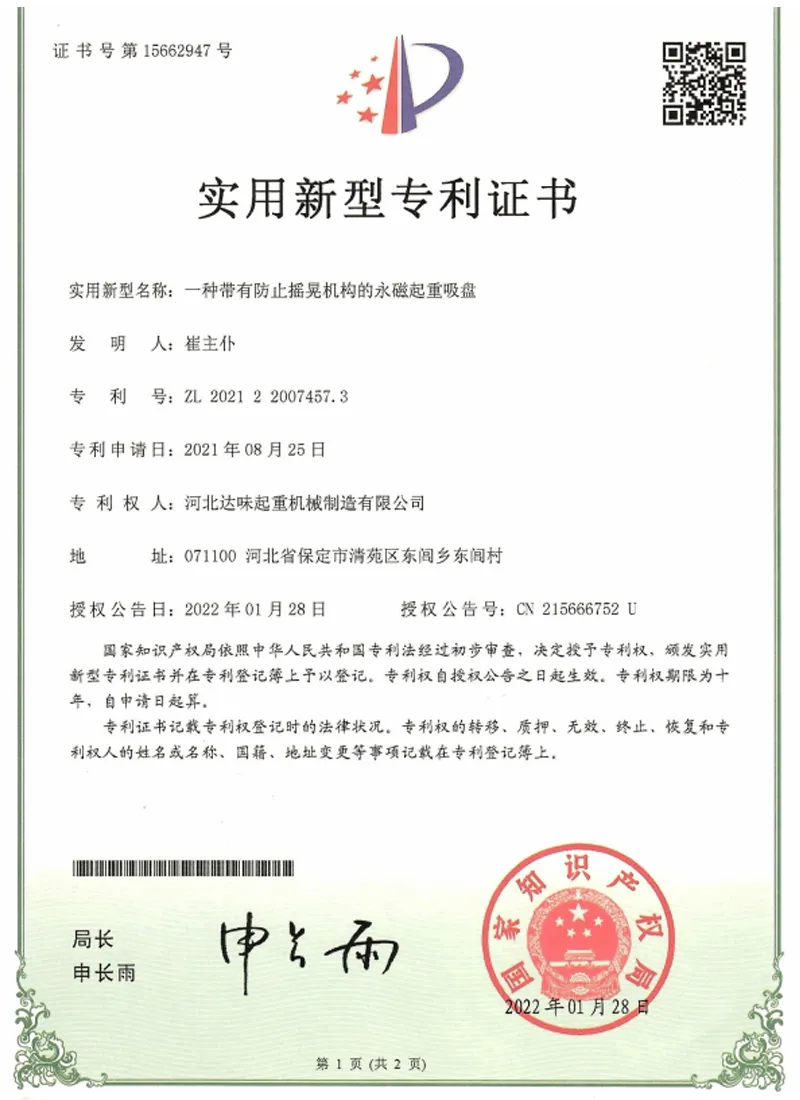rail mounted crane
Understanding Rail Mounted Cranes A Critical Component in Modern Industry
In today's fast-paced industrial landscape, the efficiency and reliability of material handling equipment are paramount. Among the various types of cranes used in industries, rail mounted cranes have gained significant recognition for their performance and versatility. These specialized cranes are integral to operations in ports, shipyards, warehouses, and manufacturing facilities, where heavy lifting and precise positioning are often required.
What are Rail Mounted Cranes?
Rail mounted cranes, as the name suggests, are cranes that run on steel rails positioned on the ground. This design allows them to travel along predetermined paths, enabling the transportation of goods over significant distances within a defined area. These cranes are typically equipped with various lifting mechanisms, such as hoists, and can handle a range of loads from light to incredibly heavy, making them indispensable in industries that deal with bulky materials.
Advantages of Rail Mounted Cranes
1. High Load Capacity Rail mounted cranes are designed to lift heavy loads, making them suitable for industries such as construction, shipping, and manufacturing. Their robust structure and design enable them to handle weights that would be challenging for standard cranes.
2. Efficient Movement The ability to travel along rails allows for smooth and efficient movement over large areas. This is particularly beneficial in settings like shipyards and ports, where goods must be moved swiftly across substantial distances.
3. Durability and Stability Rail mounted cranes are designed for heavy-duty operations. Their stability ensures safety during lifting operations, reducing the risk of accidents and material damage. Their construction typically includes quality materials that withstand harsh environmental conditions.
4. Customizability These cranes can be customized to meet specific operational needs. Businesses can choose from various configurations regarding height, reach, and lifting capability, making rail mounted cranes adaptable to diverse applications.
5. Ease of Operation Modern rail mounted cranes are equipped with advanced control systems that simplify operation. Operators benefit from improved visibility and intuitive controls that enhance safety and efficiency.
Applications Across Industries
Rail mounted cranes are utilized in a variety of sectors
rail mounted crane

- Shipping and Port Operations In ports, rail mounted cranes are vital for loading and unloading shipping containers
. Their ability to move quickly along fixed paths enables rapid turnaround times for cargo handling.- Manufacturing In manufacturing plants, these cranes facilitate the transport of heavy components and machinery along assembly lines. Their precision in movement helps streamline production processes.
- Construction Sites In construction, rail mounted cranes can assist in lifting heavy materials such as steel beams and concrete blocks, providing a reliable solution for large-scale projects.
- Mining and Steel Industry Rail mounted cranes are integral to the mining and steel sectors, where they handle bulk materials and heavy equipment, ensuring safe and efficient operations.
Safety Considerations
While rail mounted cranes offer numerous advantages, safety is a critical concern in their operation. Regular maintenance and inspections are essential to ensure that the cranes function correctly and safely. Operators must be adequately trained to handle the equipment, especially concerning load limits and emergency procedures. Implementing safety protocols, such as proper signaling and communication among workers, is vital in preventing accidents during material handling.
Future of Rail Mounted Cranes
As industries continue to evolve with technological advancements, the future of rail mounted cranes looks promising. Innovations in automation and smart technology are likely to enhance the efficiency and safety of these cranes. For instance, integrating IoT (Internet of Things) technology can provide real-time monitoring and predictive maintenance, further increasing operational efficiency.
Moreover, as the demand for sustainable practices grows, manufacturers are exploring eco-friendly designs and energy-efficient systems in rail mounted cranes. This shift toward sustainability is expected to drive further innovations and improvements in crane design and function.
Conclusion
Rail mounted cranes play a crucial role in various industries by providing reliable and efficient solutions for heavy lifting and material handling. Their advantages, ranging from high load capacity to customizable designs, make them a preferred choice for many operations. As technology and industrial needs evolve, rail mounted cranes will undoubtedly adapt, continuing to enhance their utility in the modern industrial environment.
-
Portable 2000 lb Gantry Crane | Heavy-Duty & AdjustableNewsAug.30,2025
-
Versatile Lifting Solutions with Gantry and Overhead CranesNewsAug.29,2025
-
The Versatile Mobile Gantry Crane SolutionNewsAug.29,2025
-
Reliable Movement with Heavy Machinery Skates and RollersNewsAug.29,2025
-
Reliable Lifting Performance with 2000 lb Gantry Crane and 2 Ton Overhead SystemsNewsAug.29,2025
-
Maximize Lifting Efficiency with PML Magnetic LiftersNewsAug.29,2025
-
Efficient Relocation Starts with Reliable Machinery MoversNewsAug.29,2025
